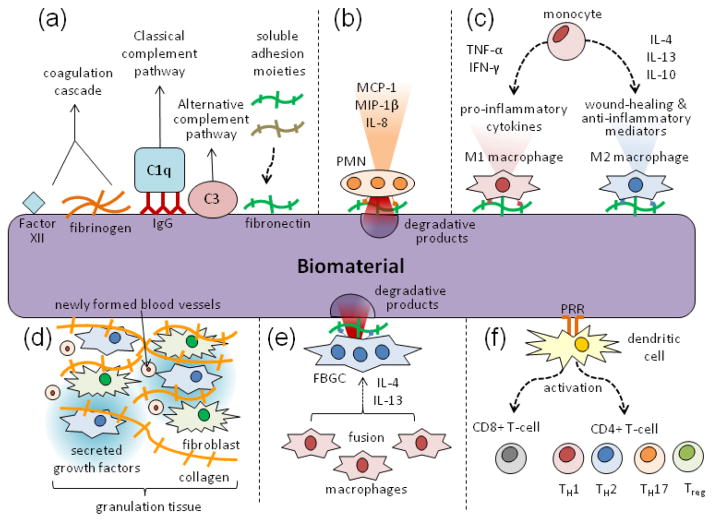FIGURE 2.
Typical sequence of events that make up the foreign body response to a biomaterial. (A) Proteins for the coagulation cascade, complement pathways, and adhesion spontaneously adsorb to the surface of the material. (B) PMNs are recruited as part of the acute inflammatory phase, secreting inflammatory cytokines and releasing degranulation products. (C) The chronic phase of inflammation consists mainly of macrophages derived from circulating monocytes. Depending on the material and microenvironment, they can polarize to either M1 or M2 macrophages. (D) Granulation tissue forms as a result of growth factors released by macrophages, resulting in newly formed blood vessels and collagen producing fibroblasts. (E) Macrophages at the surface of the material also fuse into highly degradative FBGCs in the presence of IL-4, IL-13, and specific adhesion cues. (F) Dendritic cells activate and prime the adaptive immune response by presenting antigen to cytotoxic CD8+ T-cells and helper CD4+ T-cells.

